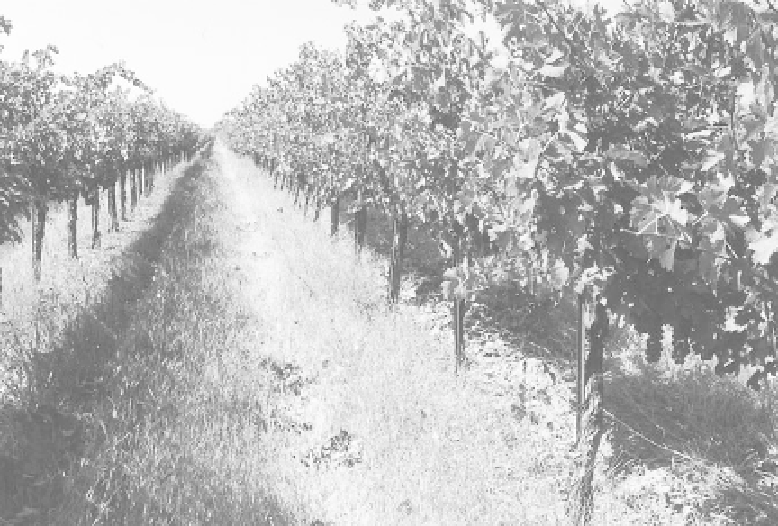Agriculture Reference
In-Depth Information
Figure 7.8
A vigorous grass cover crop maintained with subsurface drip irrigation in the Lodi District,
Central Valley, California. Photograph by the author.
ture, and generally add more organic matter than legumes. If allowed to seed in
early summer, a seed bank for subsequent regeneration is built up.
Summer Annuals
. These are mainly volunteer grasses, many of which may be
native species. Their competition with the vines for water and N can reduce vine
vigor on deep fertile soils.
Perennials
. These include grasses such as perennial ryegrass (
Lolium perenne
),
red fescue (
Festuca rubra
), or native species as in the Central Valley of California;
legumes such as white clover (
Trifolium repens
) and strawberry clover (
T. frag-
iferum
); and the summer-active, deep-rooted chicory (
Cichorium intybus
). Under
irrigation, these cover crops can be very vigorous and difficult to keep out of vine
rows, as illustrated in figure 7.8. As is the case with the annual species, these peren-
nials compete with the vines for water and nutrients.
Water Conservation
. Keeping the rows and inter-rows free of weeds and cover
crops decreases competition with the vines and saves water. An herbicide such as
glyphosate is commonly used to control weeds in the rows. Clean cultivation of
the inter-rows is practiced in many viticultural areas during the summer to min-
imize water loss by soil evaporation and transpiration (other than by the vines),
but it does adversely affect soil structure (section 7.4.1).
7.3.2
Mulching
When a cover crop is mowed in late winter through summer, the mowings can
be thrown into the vine row to form a
mulch
. Other forms of mulch are compost,
bark chips, and cereal straw (fig. 7.9). Mulches have several beneficial effects in
vineyards, as follows:

